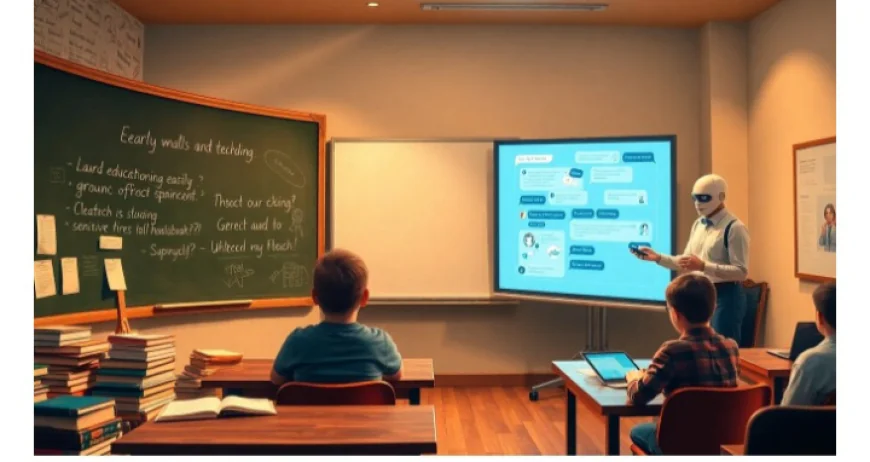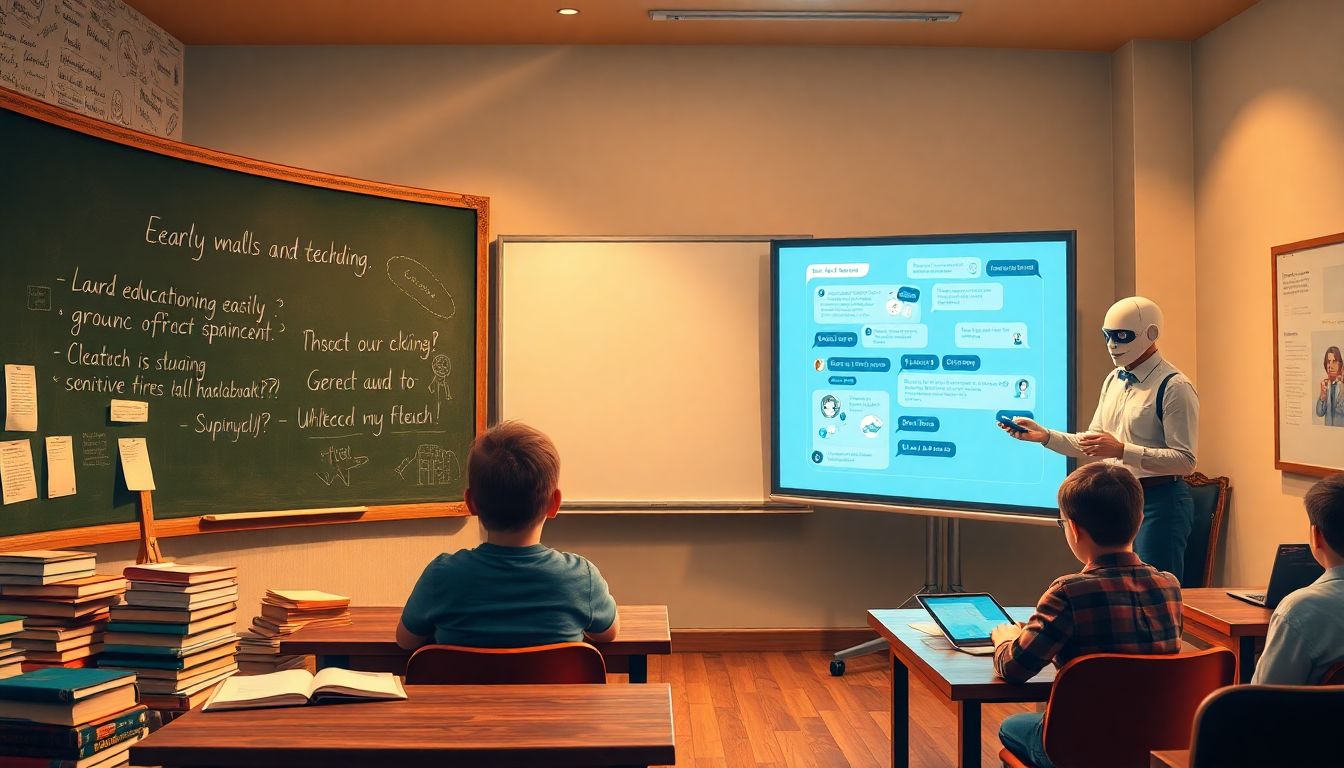From Chalkboards to Chatbots: The Evolution of Teaching Tools
Education has come a long way. What started with simple chalk and textbooks now uses super-smart computers and AI. Each step brought new ways to teach and learn, changing classrooms forever. Schools around the world are now using more digital tools than ever before. Understanding this journey helps us see how we can make learning better for everyone.


From Chalkboards to Chatbots: The Evolution of Teaching Tools
Introduction
Education has come a long way. What started with simple chalk and textbooks now uses super-smart computers and AI. Each step brought new ways to teach and learn, changing classrooms forever. Schools around the world are now using more digital tools than ever before. Understanding this journey helps us see how we can make learning better for everyone.
The Era of Traditional Teaching Tools
The Use of Chalkboards and Textbooks
Long ago, teachers used chalkboards to explain lessons. Students relied on textbooks to get information. These tools were simple but powerful at the time. They shaped early classrooms and gave students a common learning space. However, they had limits, like not being very interactive, and schools couldn’t always get enough supplies.
Early Visual Aids and Physical Materials
Teachers added maps, flashcards, and models to make lessons more visual. These tools helped students understand complex ideas better. For example, a globe made geography more real. Still, physical resources couldn’t easily be shared or updated.
Challenges of Traditional Methods
Traditional methods had issues. For one, they weren’t easy to scale. Not every school had enough books or materials. Also, many tools weren’t accessible to everyone, especially students with special needs. Education historians say these old ways made it hard to reach all students equally.
The Advent of Digital Tools in Education
Introduction of Projectors and Early Computer Aids
As technology grew, classrooms saw projectors replacing chalkboards. Teachers started using transparencies and early computer programs. These tools made lessons more dynamic and colorful. Early software helped students practice math or learn spelling more fun.
Learning Management Systems (LMS)
Platforms like Moodle, Blackboard, and Canvas brought classrooms online. They let teachers post assignments, give tests, and communicate with students easily. Now, students can learn from anywhere, and teachers can track progress with ease. LMS platforms became the backbone of online learning.
Impact on Teaching and Learning
Digital tools increased access, so more students could learn at their own pace. They allowed for personalized lessons, giving each student what they need. Schools started gathering data, which helped improve teaching methods. Studies show digital adoption surged in recent years, especially during the pandemic.
The Rise of Interactive and Personalized Education Technologies
Smartboards and Interactive Displays
Today, classrooms turn into interactive spaces with smartboards. Teachers can draw, show videos, and even connect students with digital apps. In K-12 schools and universities, these tools make lessons more engaging. Students get hands-on experiences, boosting understanding.
Educational Apps and Gamification
Apps turn learning into games. Kids love apps that reinforce skills through fun challenges. Gamification keeps students motivated and helps them remember better. For instance, math games make hard problems feel like play.
Data Analytics and Adaptive Learning Systems
Modern tech can analyze how students perform and adapt lessons accordingly. Systems like DreamBox adjust difficulty levels based on student answers. Some schools report faster improvement and higher test scores because of personalized learning paths.
The Emergence of AI and Chatbots in Education
AI-powered Tutoring and Assistance
AI is changing how tutoring works. Platforms like Carnegie Learning and Duolingo use AI to teach math, language, and more. They give instant feedback, making studying more effective. Many students show bigger gains when AI is part of their learning process.
Chatbots as Educational Support
Chatbots handle student questions anytime, anywhere. Georgia State University uses a chatbot to help students quickly find answers about deadlines or policies. These bots save time and are scaled to support many students at once, reducing the load on teachers.
Future Potential and Challenges
AI will keep improving, making classrooms more personalized and efficient. But concerns exist. Privacy, bias, and digital gaps are real issues we must manage wisely. Balancing tech use with ethics is key for future success.
The Future of Teaching Tools: Integrating Technology with Pedagogy
Augmented Reality (AR) and Virtual Reality (VR)
Imagine walking inside a human body or exploring ancient ruins without leaving your class. AR and VR make these experiences real and immersive. They are transforming science labs, history lessons, and vocational training.
Blockchain and Credentialing
Blockchain can improve how we issue certificates. It keeps records safe and transparent. This could change how we verify skills and degrees — making lifelong learning more trustworthy and accessible.
Actionable Tips for Educators and Institutions
- Keep up with new tech and training.
- Always protect student data and privacy.
- Mix traditional teaching with digital tools for the best results.
Conclusion
From chalkboards to chatbots, the tools of education have changed a lot. Each innovation helps us teach better and makes learning more exciting. As technology continues to grow, staying adaptable is vital. Schools and teachers who embrace new tools will help students succeed in a world that moves faster every day. Now is the time to stay curious and open to change — because the future of education is just getting started.



 VARSHITHA
VARSHITHA